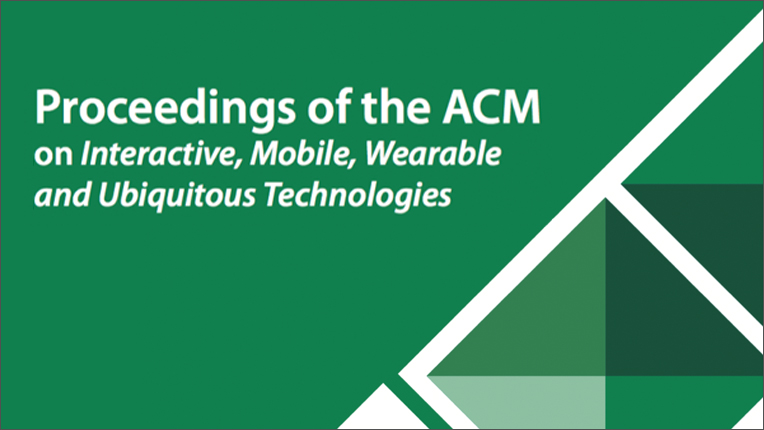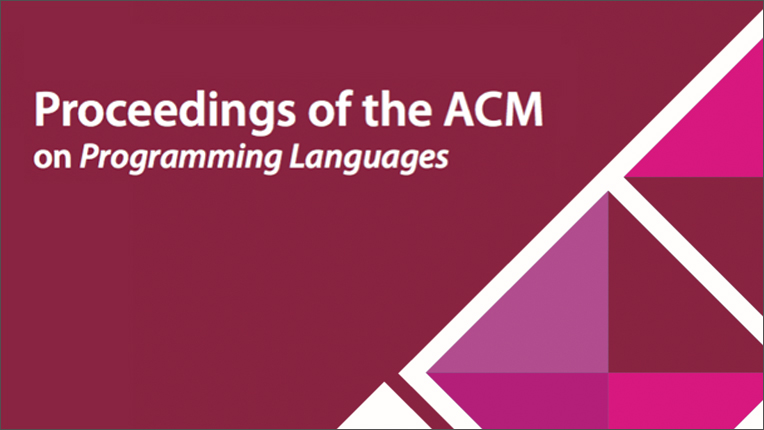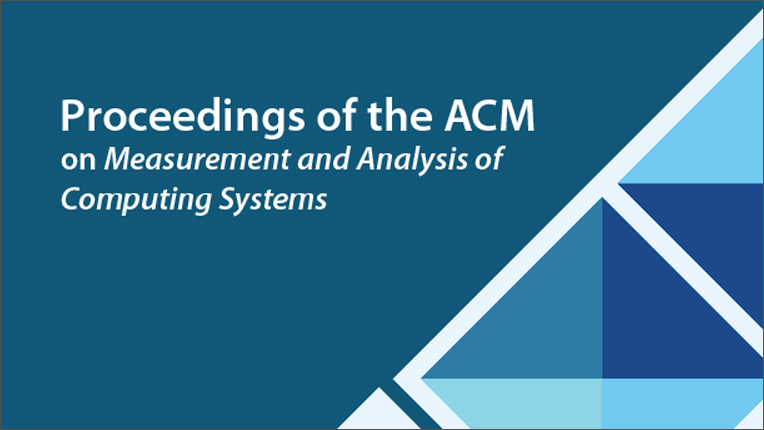How to Submit a PACM Proposal
This document provides additional information on key aspects of PACM, including the expectations placed on the review process, policies, and governance, as well as some general criteria to help assess if a conference is a good fit for PACM. It also offers a brief description of the expected structure and content of a proposal submitted to PACM towards the creation of a new PACM journal Title. Proposed modifications to existing PACM titles must also be submitted to the PACM Steering Committee for approval. Such modifications include, among others, adding a new affiliated conference, removing an affiliated conference, changing the frequency of publication, and changing the governance of the Title, etc. If in doubt regarding whether a proposed change requires approval, please check with ACM HQ.
Criteria
A conference may apply to be included within a Proceedings of the ACM series if it meets the following criteria:
- A review process that meets the following criteria:
- A minimum of 3 written reviews by qualified experts in the field; this provision must permit recruiting reviewers from outside a program committee when the program committee lacks available members with sufficient expertise;
- Initial review decisions that include accept, accept subject to revisions, revise, and reject;
- An opportunity for papers that require revisions to be revised and resubmitted (with written response) for review by the same reviewers.
Note: Shepherding without review of the revised paper by the same set of reviewers does not count as a review cycle; - Papers need to be able to include sufficient material for reviewers to evaluate correctness and other evaluation criteria without being constrained by arbitrary page limits. Mechanisms should be available to review appendices or extended-length papers when necessary.
- An established record of high quality, judged by standing in the field, citations, and other measures used by PACM Steering Committee;
- Documented program committee policies that include the review process, eligibility for service on the program committee, processes for addressing superficial or inadequate reviews and assigning papers to reviewers with appropriate expertise, and procedures for managing conflict of interest consistent with ACM policy;
- An established steering or governance committee that submits the request for inclusion in PACM in cooperation with one or more SIGs (and has the authority to commit to agreement for sake of continuity) and agrees to continue to abide by the reviewing and quality criteria;
- A discussion of its approach for allowing publication in the corresponding series without presentation at the conference:
- Conferences must disclose their policies on handling papers from authors who are unable to present in person (for financial, visa, health, or other reasons);
- PACM Series are encouraged to include journal-only submission options (where papers are submitted to the relevant PC for inclusion in PACM only, but without obligation to appear in the conference).
Does Your Conference Meet PACM Guidelines?
An important aspect in preparing a PACM proposal is assessing whether the conference(s) being considered for conversion to PACM publication is (are) indeed a good fit for PACM. PACM targets top-tier conferences that publish papers of very high quality commensurate with that of top archival journals. The questions below acknowledge that there may not be a "one-size fits all" answer, so that a more nuanced assessment may be needed. A positive answer to all the questions below is, therefore, not required for a conference to be a fit, but multiple negative answers should raise a flag.
Specifically, a conference is likely to be a reasonable choice for a shift to a PACM publication model if, in addition to complying with the PACM review guidelines, it has positive answers to most of the following questions:
-
If you were to ask a random sample of researchers in your field to name their top three to four conferences, how many would likely include the conference(s) you are currently targeting for PACM? If the figure is less than, say, two-thirds, then the proposed conference(s) is (are) probably not a good match for PACM.
-
Is having papers in the conference(s) proposed for inclusion in PACM considered a key metric in tenure or promotion cases at your institution?
-
What journal, if any, do you consider to be of comparable quality to the conference(s) proposed for inclusion in PACM?
-
In spite of their many flaws, citation metrics capture important aspects related to impact and visibility. Does the conference(s) compare favorably along various such metrics, e.g., impact factor, average number of citations per paper, etc., to the top venues in the field?
-
Are the top people in your field publishing in the conference(s) proposed for inclusion in PACM?
-
Do attendance figures for the proposed conference represent a significant fraction of the corresponding research community?
-
Looking at past Program Chairs and Program Committee members of the proposed conferences, do they represent a cross-section of the top people in your field?
What Should the Proposal Contain?
A proposal is expected to (at least) provide the following information:
Proposed Name and Areas of Coverage
The name for the proposed PACM Title should be representative of the areas the new Title is expected to cover. A Title that plans to cover multiple areas should articulate a strong rationale for why the areas belong together.
Proposed Conferences and Series Vision
This section should identify the conference(s) whose research articles are targeted for publication in a given PACM Title, and outline the model that will be used for their publication.
Conference Information
A time-line identifying which conference would be included in the Title (and in what time-frame) should be provided together with information on why each conference qualifies for publication in PACM.
Conferences targeting immediate publication in a PACM Title should provide information on the conference’s reputation, the level of quality of accepted papers, and how the conference’s selection process conforms with PACM’s principles. A description of the conference’s governance and how continuity will be ensured from year-to-year should also be provided.
For conferences that do not yet fully comply with PACM’s principles and that may eventually seek to be published in the proposed PACM Title, a description of the process envisioned for achieving these principles should be outlined.
Publication Model
The proposal should describe the intended publication model, including how papers will be selected, i.e., the editorial process that will be followed, whether yearly or rolling submission deadlines will be used, the number of issues that are expected each year, etc.
The proposal should also address how it expects to handle papers from authors unable to physically attend the conference, e.g., for financial, visa, health, or other reasons.
Contact Information and Title Editorial Board
This section should list the SIGs with which the publication will be affiliated, and include contact information for representatives from each SIG. It should also include details regarding the structure of the Title’s Editorial Board, including proposed Editor-in-Chief.
Editorial Board
Each PACM Title will have an Editorial Board structured according to its own proposed and approved governance system. The Title’s Editorial Board shall generally have representatives of each affiliated conference. A Title’s Editorial Board will have an Editor-in-Chief who will be identified in the proposal. A Title’s Editorial Board may have one or more Associate Editors and Senior Associate Editors from each affiliated conference who will be responsible for paper selection.
To submit a proposal or for further information contact [email protected].
PACM Guidelines
Before submitting your proposal, you will need to ensure that your conference adheres to the criteria outlined under PACM Guidelines and PACM Governance. These guidelines will provide insight into the specifics of the program and what is required to participate, including the structure of the journal editorial board, submissions systems, access, and promotion.
PACM Governance
The PACM Steering Committee is charged with PACM oversight and operation. However, each PACM journal will have an Editorial Board structured according to its own proposed and approved governance system. The ACM Publications Board has ultimate authority over the PACM Series and each of its titles.
Production Instructions
Once a proposal has been approved, your production team will need to be assembled. Detailed instructions for PACM production vendors are found in the PACM production guidelines and required metadata documents. ACM templates must be used by authors to ensure a uniform look to the journals program.
PACM on Interactive, Mobile, Wearable and Ubiquitous Technologies
Proceedings of the ACM on Interactive, Mobile, Wearable and Ubiquitous Technologies (IMWUT) is a premier journal for research relevant to the post-PC era. IMWUT covers a broad range of topics and includes research contributions in systems and infrastructures, new hardware and sensing techniques, and studies of user experiences and societal impact.

PACM on Programming Languages
Proceedings of the ACM on Programming Languages (PACMPL) is a Gold Open Access journal publishing research on all aspects of programming languages, from design to implementation and from mathematical formalisms to empirical studies. Each issue of the journal is devoted to a particular subject area within programming languages and will be announced through Calls for Papers.

PACM Series on Measurement and Analysis of Computing Systems
The PACM Series on Measurement and Analysis of Computing Systems (POMACS) publishes original research of the highest quality dealing with performance of computing systems, broadly construed. We recognize that critical insights into key design trade-offs in computer or network systems have historically be obtained using a broad set of tools: benchmarking and experimental evaluation, mathematical modeling, algorithmic analysis, which often need to be combined creatively.
